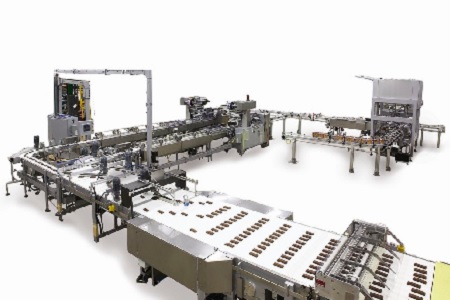
Whether you’re manufacturing food, medicine, toys, or other products, packaging can be quite a challenging task, especially if your company has to meet the ever-growing demands of your clients. Being able to package a minor batch of products may be easy for small-scale operations, but what if you have to handle a large volume of orders? This is the main reason why manufacturing analysts say that automating the packaging process should be high on any manufacturer’s priority list.
The Packaging Process and Extent of Automation
Depending on the size of the business, type of product, and the stability of demand for a product, a company’s packaging process may have varying degrees of automation. Some use a mix of specialized automation equipment and human labor, while others go so far as to fully automate the process with a series of machinerythat feature powerful miniature brush and brushless DC motors and other industrial-class components. These machines offer ahigh degree of consistency and precision, ensuring thatthe products are free from packagingdefects.
There are a few major reasons why automating the packaging process is a must for companies in different industries, but the most important one is to achieve better efficiency. Without the help of robots, machines, and other automation equipment, packaging large batches of products can be a difficult and risky process. Non-automated packaging operations simply cost more due to human labor,including the compensation, employee benefits, and other expenses associated with it.
The use of programmable, high-precision machinerydoesn’t just bring accuracy to the production line but also speed and lower downtimes. An industry-grade machinecan work several times faster than a single human worker. In fact, a high-performance machine could be more than enough to replace a team of three or more human workers.
Aside from being able to work faster, machines used in automation also have a degree of consistency that boasts very little, if any, variation. This tight margin of error helps minimize losses caused by defects in packaging and minimizes the amount of packaging material that would have otherwise been discarded and wasted. Because of their consistency, packaging machinesare also preferable over human workers when packaging smaller products such as medicine and miniature components.
Automation also helps minimize production downtimes. Because machinesdo not need to stop for breaks, it can work for longer hours at a time compared to human workers. Furthermore, a human worker that gets sick may be unable to work for days, but a damaged machinemay be repaired and have it resume operations as soon as a problematic part is fixed. Last but not least, industrial-grade components in robots, machines, and other automation equipment are specially designed to withstand the wear and tear associated with large-scale packaging.
Automation for Business Growth
Some may argue that automation is solely for larger businesses, but automated packaging also has its place in small and medium-sized businesses. By being able to package more than what a small crew can handle, automation presents a lot of opportunities for smaller business to increase their production. The more products they can package, the more sales or orders they can commit to. This increased potential for growth can’t be achieved with its alternative: hiring more people to keep up with increasing orders.
Automation was once exclusive to the most successful businesses, but changes in robotics and machinery designs and the increasing affordability of robotic components has made it possible for companies with limited budgets to adopt robots and machines into their production processes. Automated packaging is just the tip of the iceberg: in the future, companies of all sizes may have the means to automate the entire production process, pushing industries into an age where production is several times faster than what it is today.

